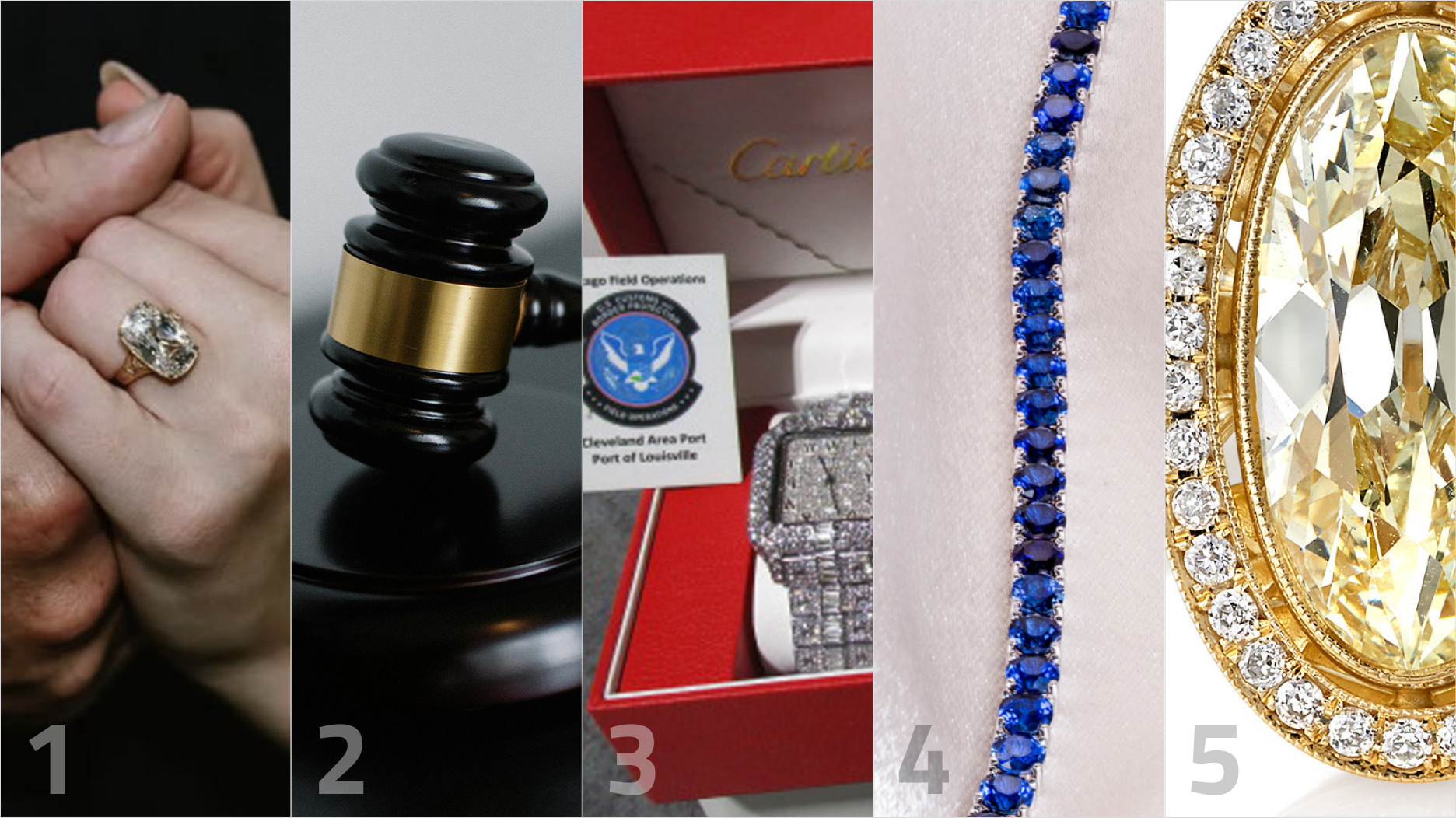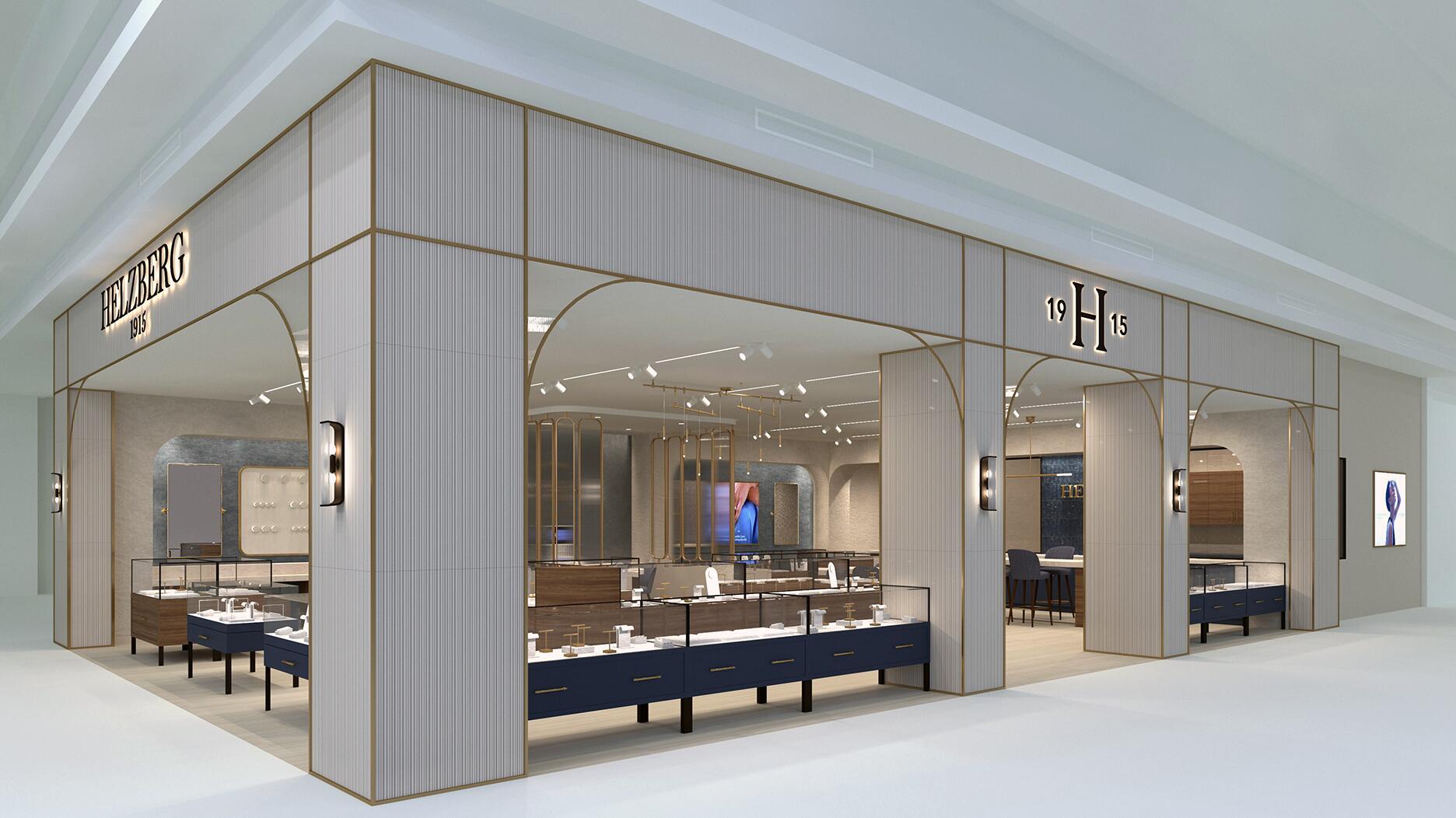Linda Coutu is rejoining the precious metals provider as its director of sales.
What’s Next for Signet Jewelers
The jewelry giant is moving into the “Inspiring Brilliance” stage of its growth strategy. Here’s what that means.

I have an inbox full of press releases telling me about all the great things going on, from new store openings to the latest celebrity collaboration.
The quarterly report strips away the fluff and lays bare how a company is really doing and what’s ahead.
I recently covered Signet Jewelers fourth-quarter and full-year results, and found few surprises there.
Brick-and-mortar sales were down amid COVID-19 restrictions, while online sales surged.
It’s a similar story nearly everywhere, from jewelry giants Tiffany & Co. and Pandora to luxury titans Kering and LVMH.
What caught my eye was the announcement included with the results.
Signet has completed the “Path to Brilliance” part of its turnaround plan, which centered on a customer-first strategy and improving the omnichannel experience.
The company is moving into the next phase of its growth strategy, dubbed “Inspiring Brilliance.”
Here’s what this new phase means for Signet.
Signet is getting more personal.
Like any retailer, Signet is looking to find new customers and hold onto their existing ones.
From fresh takes on initial pendants from designers like Brent Neale and Marla Aaron to astrology-inspired jewels, personalized jewelry is having a moment and Signet has been taking notes.
The jewelry giant is expanding services to offer shoppers a more personalized experience.
With the help of data-backed insights, the company said it will turn its customer-first strategy into “a consumer-inspired experience.”
Last month, Jared the Galleria of Jewelry dipped its toe into the personalization pool with the launch of The Jared Foundry, an in-store experience designed to make customized jewelry more convenient and accessible.
While all Jared locations offer customization options, Jared Foundry takes it to the next level.
Shoppers looking to create a custom piece will be connected with a jeweler, either in-store or virtually.
The jewelers will ask questions to get a sense of their personality, lifestyle, and style as well as more practical things like budget, preferred materials, and the timeline for receiving the finished piece.
Jewelers will keep customers in the loop throughout the process, sending sketches, images, and videos to show progress and get their feedback.
The Foundry shops are available in 19 stores in nine states—California, Illinois, Maryland, New York, Ohio, Oregon, Texas, Virginia and Washington—with more openings to follow.
There’s only one in New York at the moment, but I’m looking forward to checking it out in person some day soon.
Signet is all in on digital commerce.
With temporary closures hampering in-store sales, online sales were a saving grace for Signet throughout the holidays and beyond.
You’d be hard-pressed to find a retailer that wasn’t in the same boat amid the tightest COVID-19 restrictions.
Signet didn’t waste time bolstering its e-commerce capabilities.
Last June, the company named former Citibank executive Rebecca Wooters as its new chief digital officer, tasking her with overseeing its digital strategy.
By the fall of 2020, it had implemented a full-time virtual selling team and was training 15,000 store associates to work virtually with customers from their homes or in stores.
CEO Gina Drosos noted on the company’s second-quarter earnings call that 40 percent of purchases in Q2 came from new customers, many of whom were acquired online.
By the time it reported third-quarter results in December, more than 600,000 virtual appointments had already been held.
Drosos noted on Q2 earnings call that virtual consultants produced higher conversion rates and a higher average transaction value.
Signet was primed and ready for the holiday season, upping its shipping capacity to five times what it was the previous year, gearing up for the influx of holiday orders.
It’s done a solid job of blending its in-store and online shopping experiences, introducing Buy Online Pick-Up In Store (BOPIS) and curbside delivery services.
In its fourth-quarter results, Drosos noted high rates of customer satisfaction and on-time fulfillment with BOPIS, with 86 percent of orders picked up within three hours in December.
BOPIS was a particularly popular choice among male customers just ahead of the holidays, she added.
While I’m sure we can all relate to being in dire need of a last-minute gift, BOPIS and other options that blend in-store and online shopping will likely grow in popularity as shoppers ease themselves into returning to physical retail.
Signet also knows the importance of a good omnichannel strategy.
Signet is bulking up its e-commerce capabilities, but it hasn’t forgotten about its physical presence.
Some wonder if physical retail is on its last legs, that perhaps the pandemic-induced rise in online shopping has just accelerated in-store shopping’s inevitable demise.
I’m not on Team Doom and Gloom and it doesn’t appear Signet is either as it readies itself to welcome back customers in whatever capacity they’d like to return.
In recent years, Signet has been trimming its massive fleet of stores, moving away from low-performing malls to off-mall locations.
The company is planning to close more than 100 stores and open more than 100 in stronger locations this fiscal year.
Signet also has plans to add kiosks in underserved markets.
Its Piercing Pagoda banner, operated via mall kiosks, is consistently one of its strongest performers, so I say, the more kiosks the merrier.
Signet is ramping up its sustainability initiatives.
Sustainability is one of those buzzwords that gets repeated so often we might forget what it means.
However, it’s increasingly important to younger consumers and they know very well what it means to be sustainable.
If you’re caught paying lip service to the cause and can’t back it up, young shoppers will sniff that out quickly and move on to a brand doing it right.
As part of its sustainability efforts, Signet has joined the UN Global Compact, a voluntary initiative to adopt sustainable and socially responsible policies.
It also is part of the Sustainability Accounting Standards Board Alliance, a nonprofit that provides guidance for the disclosure of sustainability-related information to investors.
Know thy enemy and know yourself.
Ancient Chinese general Sun Tzu may have said this first in “The Art of War,” but Signet seems to have taken it to heart.
The loveliest piece of jewelry couldn’t hold a candle to the idea of taking a long, relaxing vacation far away from the city.
That’s how I feel, at least, and I know there are a lot of people who would agree. Signet knows that too.
The vaccine rollout is bringing customers closer to pre-pandemic life. As that shift happens, discretionary spending may go to other categories.
I interviewed Jewelers Board of Trade President Erich Jacobs in February and I remember, as we discussed its recent report, that he suggested retailers keep a close eye on travel data.
He said an important statistic to look at is 90-plus-day bookings of leisure flights, which have plummeted and stayed down.
“To the extent that that starts rising up, I think the jewelry industry is going to have to really pay attention to that because my guess is the pendulum is going to swing the other way,” Jacobs said.
In a recent earnings call, Drosos also noted the potential shift in discretionary spending and said Signet would increase its marketing spending to continue to fuel its momentum.
She said the company is tuning in to what consumers are interested in, looking into rental and subscription jewelry services as well as new designers.
Adaptability is the key.
Perhaps what I like most about a quarterly report is the way it holds a company accountable to its investors and to the public.
I like the transparency, the way it lays out all that information for the world to see. I enjoy taking that data and shaking it upside down until a story falls out.
The story I found in Signet’s recent report is similar to what I’ve seen in the jewelry industry at large.
Jewelers, big and small, were scrambling to make things work as the COVID-19 pandemic turned the world upside down.
In the midst of an incredibly challenging environment, retail or otherwise, adaptability may be the only thing that can save you.
The Latest

The Signet Jewelers-owned store, which turned 100 last year, calls its new concept stores “The Edit.”

The supplier has a curated list of must-have tools for jewelers doing in-house custom work this year.

How Jewelers of America’s 20 Under 40 are leading to ensure a brighter future for the jewelry industry.

Footage of a fight breaking out in the NYC Diamond District was viewed millions of times on Instagram and Facebook.


The governing board welcomed two new members, Claire Scragg and Susan Eisen.

Sparkle with festive diamond jewelry as we celebrate the beginning of 2026.

Roseco’s 704-page catalog showcases new lab-grown diamonds, findings, tools & more—available in print or interactive digital editions.

The master jeweler, Olympian, former senator, and Korean War veteran founded the brand Nighthorse Jewelry.

In its annual report, Pinterest noted an increase in searches for brooches, heirloom jewelry, and ‘80s luxury.

Executive Chairman Richard Baker will take over the role as rumors swirl that a bankruptcy filing is imminent for the troubled retailer.

Mohr had just retired in June after more than two decades as Couture’s retailer liaison.

Shekhar Shah of Real Gems Inc. will serve as president of the Indian Diamond & Colorstone Association in 2026.

This year’s good luck charm features the mythical horse Pegasus, and is our first Piece of the Week of the new year.

As part of the leadership transition, Sherry Smith will take on the role of vice president of coaching strategy and development.

It marks the third time the country has headed the Kimberley Process. Ghana will serve as vice chair.

The new Bulova x Stetson designs highlight two animals often associated with the American West—the bison and the Texas Longhorn.

Its residency at Yamron Jewelers will run through May 2026.

From influential executives to innovative designers, we pay tribute to the people we said goodbye to this year.

The retailer is expanding into areas with large Indian and South Asian populations.

The Italian brand has opened its first flagship amid the peaks of the Dolomites in Madonna di Campiglio, Italy.

The new curation at the Natural History Museum of Los Angeles County showcases rare gem and mineral specimens in their uncut, natural state.

The couple pleaded guilty to concealing at least $127 million in cash transactions at its precious metals businesses.

Consumers shared concerns about prices, inflation, tariffs, trade, and politics in the survey’s write-in response section.

In February 2026, the auction house will move its headquarters to the former Steinway Hall, a neoclassical landmark on Billionaires’ Row.

The new show will take place Jan. 23-25, 2026.

The former BHP Billiton leader and Gemfields chairman is remembered for his influential leadership throughout his 50-year mining career.


























